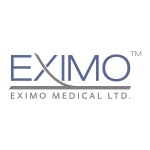 Eximo Medical has announced it has received 510(k) clearance from the US Food & Drug Administration (FDA) for its B-Laser atherectomy system for peripheral arterial disease (PAD). B-Laser is a transformative 355nm wavelength laser technology designed to address unmet clinical needs for treating multiple vascular indications. The specific indication cleared by the FDA is: “The B-Laser atherectomy system is intended for use in the treatment, including atherectomy, of infrainguinal stenoses and occlusion, including in-stent restenosis (ISR).”
Eximo Medical has announced it has received 510(k) clearance from the US Food & Drug Administration (FDA) for its B-Laser atherectomy system for peripheral arterial disease (PAD). B-Laser is a transformative 355nm wavelength laser technology designed to address unmet clinical needs for treating multiple vascular indications. The specific indication cleared by the FDA is: “The B-Laser atherectomy system is intended for use in the treatment, including atherectomy, of infrainguinal stenoses and occlusion, including in-stent restenosis (ISR).”
“This clearance represents a significant milestone for Eximo, as we can now offer the B-Laser atherectomy system for PAD in the USA. This is the first 355nm laser system cleared in the US for this purpose and, according to the clinical results and the feedback that we received from physicians, it seems that this wavelength provides significant advantages over traditional 308nm excimer lasers in term of safety, efficacy, cost and ease of use,” said Yoel Zabar, CEO of Eximo Medical. “We also plan to leverage our B-Laser platform technology to develop additional devices to address significant unmet needs in other vascular indications, including lead extraction (for which we have completed a proof of concept), coronary artery disease, thrombectomy and venous disease. Additionally, we are developing an add-on diagnostic tool and disruptive medical device for interventional gastrointestinal procedures.”
Clinical evaluation of the B-Laser device in the intended population was performed in a prospective, single-arm, multicentre, open-label, non-randomised pilot clinical study in 50 subjects in Europe, as well as in a pivotal, prospective, single-arm, multicentre, open-label, non-randomised IDE clinical study in 97 subjects in USA and Europe.
In the pilot clinical study, the results presented 100% success in crossing the target with no device related peri-operative clinically significant adverse events and no complications requiring intervention. There were no major adverse events (MAE) at one month or six months following the procedure, and only two cases (4.3%) of target lesion revascularisation among 46 subjects who completed the one-year post procedure follow-up. In the pivotal study, the safety and efficacy primary endpoints were achieved with high margins and the six-month data was consistent with the pilot study results.
“I used the B-Laser in challenging procedures during the pivotal study and found the device easy to set up and use, and a valuable addition to our treatment portfolio,” said the national PI, John Rundback, interventional radiologist and director of the Interventional Institute at Holy Name Medical Centre, Teaneck, USA. “The enrolment in both US and Europe was quick (6.5 months), and the study results up to six months have been very impressive despite treating diverse lesions such as calcium, thrombus, and restenosis (including in-stent restenosis), both above and below the knee.”











